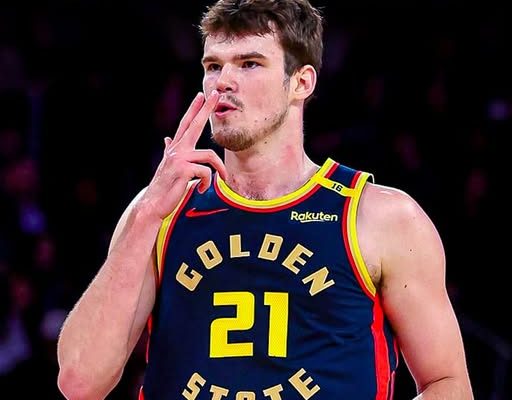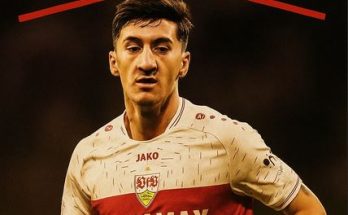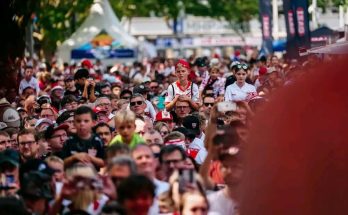The Golden State Warriors, a franchise long associated with small-ball dominance and guard-heavy excellence, may be preparing to pivot toward a new interior identity—and they just might be placing that vision in the hands of a surprising young name: Quinten Post. According to multiple sources close to the team, the Warriors’ front office has developed an increasing level of confidence that Post, their second-year big man, could emerge as the franchise’s long-term solution at the center position. While this belief may seem premature to some, those inside Chase Center are reportedly bullish on the 7-foot Dutchman’s potential, both as a rim protector and as a floor-spacing, high-IQ offensive asset.
Post, who played college basketball at Boston College after transferring from Mississippi State, wasn’t exactly a blue-chip prospect when he entered the NBA draft. His path to professional basketball was far from linear. However, what he lacked in early buzz, he’s made up for with consistency, steady growth, and a commitment to his craft that has not gone unnoticed by Warriors coaches. Golden State brought Post into the fold with limited fanfare, but what began as a low-risk flyer has rapidly evolved into a key developmental priority. The coaching staff, spearheaded by Steve Kerr and his evolving personnel group, sees Post not only as a serviceable rotation piece but as someone who could be molded into a foundational contributor in the years ahead.
The decision to invest in Post has not come out of nowhere. The Warriors’ roster construction over the past several years has been a delicate balancing act between keeping a championship core together while ushering in a new era of talent. The franchise famously stumbled in this pursuit when the James Wiseman experiment failed to pan out. That failure left the front office cautious about hyping up young bigs too early. Yet, the tone surrounding Post has been notably different. There is no pressure for him to become the next Kevin Garnett or Anthony Davis. Instead, the Warriors view Post as someone who could bring a modern twist to the traditional center role—one that fits snugly into their ball-movement-heavy, read-and-react offensive system.
Part of the appeal is Post’s versatility. At 7-feet tall with a smooth shooting stroke, he offers spacing capabilities that few centers can bring to the table. In limited action during his rookie season, he showcased a willingness to shoot the three and knock it down at a respectable clip. His mechanics are clean, his decision-making is sound, and his passing vision is far above average for someone his size. He’s not a freak athlete by NBA standards, but he understands angles, reads the game well, and has bought into the Warriors’ defensive schemes. Those close to the team have praised his humility, coachability, and desire to grow into his role—not to chase stats or star power, but to win games and help his teammates shine.
The internal belief in Post’s trajectory has also been strengthened by his performance during summer league and private team scrimmages. While these settings are far from the intensity of playoff basketball, they serve as valuable testing grounds for player development. Post’s defensive positioning, rebounding fundamentals, and willingness to communicate on the court stood out among Warriors personnel. More than once, he has been cited by assistant coaches as a “sponge” for absorbing information, including defensive reads, offensive sets, and film breakdowns. Such qualities have become more important to the Warriors in their post-dynasty transition phase, where system fit and long-term sustainability are paramount.
Post’s rise to prominence also reflects a broader trend in how the Warriors are adapting their team-building philosophy. No longer able to rely solely on the brilliance of Stephen Curry and Draymond Green to outthink and outrun opponents, Golden State is quietly recalibrating its identity to remain relevant in a deep and increasingly athletic Western Conference. Relying on undersized centers or makeshift bigs worked during the prime of the “Death Lineup” era, but that approach has its limits in 2025. As teams like the Denver Nuggets, Oklahoma City Thunder, and Minnesota Timberwolves lean into physically dominant frontcourts, the Warriors understand the need for a viable countermeasure—one that doesn’t compromise their principles of pace, ball movement, and skill.
Quinten Post, for all his unassuming background, might just be the bridge between eras. His development isn’t just about minutes or box score production. It’s about whether he can become the kind of big who keeps the Warriors’ basketball philosophy alive while adjusting it for the realities of the modern league. That means anchoring pick-and-roll defense with verticality and anticipation. That means knocking down corner threes to stretch out defenders. That means being able to hand off to guards on dribble-handoff actions and then roll or pop depending on the read. These are small things on their own, but combined, they form the kind of player Golden State needs—a functional cog rather than a standalone star.
Veteran voices in the locker room, including Kevon Looney and Draymond Green, have reportedly taken Post under their wing. Looney, in particular, has been a mentor figure, teaching Post the nuances of screen-setting angles, defensive rotations, and rebounding positioning—areas of the game where Looney has quietly been elite for nearly a decade. Green, ever the vocal leader, has pushed Post to be more assertive in practice and not to defer just because of seniority. The results have been promising. While he may not yet command defensive attention like a Joel Embiid or dominate the boards like a Rudy Gobert, Post has started to consistently win his matchups in controlled scrimmage environments.
What remains unclear is how quickly the Warriors will move to give Post meaningful playing time during the regular season. The team still has veterans on the roster who can man the five in spurts, and Kerr has always preferred a “committee” approach at the center position when possible. But behind the scenes, there’s growing momentum for giving Post more runway, especially if the team’s playoff aspirations take a backseat to youth development. It’s not inconceivable that by midseason, Post could be starting alongside Green in the frontcourt, with Curry, Thompson, and Wiggins filling out the rest of the lineup. That lineup would offer a blend of savvy, spacing, and defensive switchability that aligns with the Warriors’ ethos, even as the franchise faces the inevitability of change.
Of course, there are still hurdles ahead. Like any young big man, Post will face challenges adjusting to the speed, strength, and physicality of full-time NBA minutes. Fouls, defensive misreads, and conditioning concerns are common stumbling blocks. But the Warriors are not expecting perfection. They’re investing in potential—and more importantly, they’re doing it with intention. The messaging from the front office has been clear: Post is not a backup plan. He’s part of the plan.
As the Warriors look toward the next chapter of their storied run, their faith in Quinten Post may turn out to be either an inspired gamble or another footnote in their post-title recalibration. But for now, inside the organization, there is little doubt. They see something real in him—something foundational. And if they’re right, the next great Warriors evolution might just start from the inside out.



